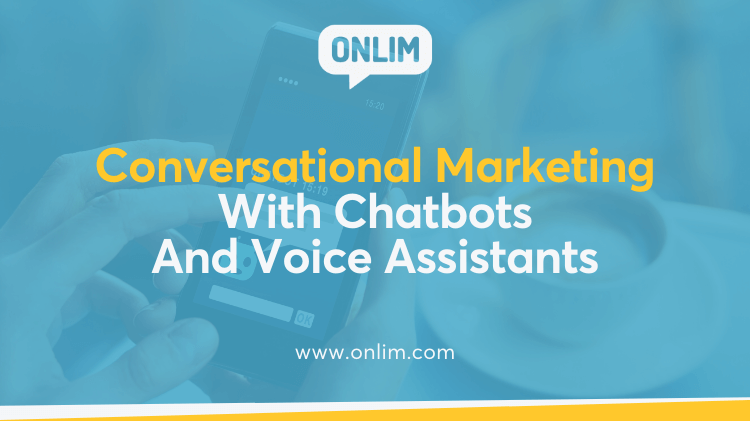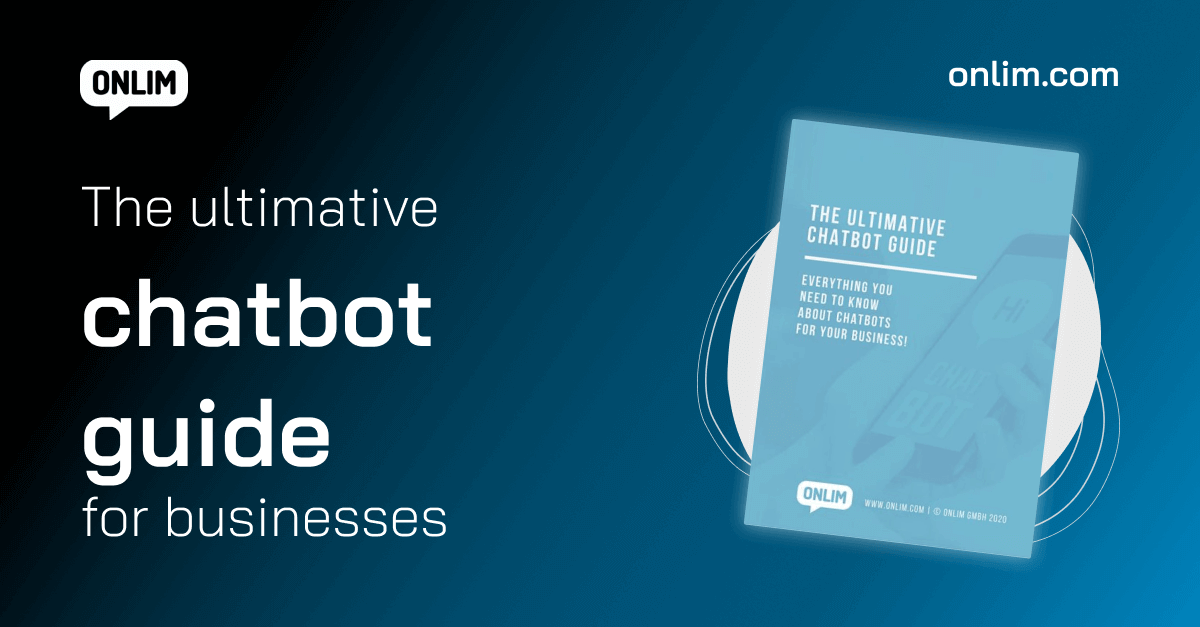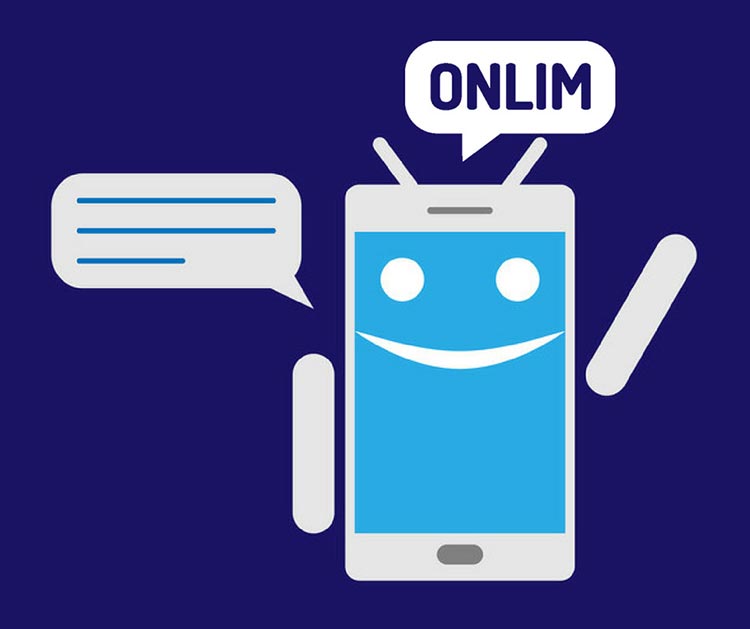Conversational Marketing With Chatbots And Voice Assistants
Conversational marketing with chatbots is the fastest way to connect with website visitors and helps you to convert leads through dialogue-driven activities. This type of inbound marketing focuses on consumer interaction and not just on one-way brand communication.
Instead of forcing users to fill out lead capture forms and wait days for a response, conversational marketing uses targeted messages to connect with people on your website.
Ideally, this is done with an automated software solution, such as chatbots or voice assistants, so that the user can move through the sales funnel as independently as possible.
Good to know: 69% of consumers find communication with chatbots great!
How to do Conversational Marketing with chatbots right!
Online shopping and a large number of sales funnels are incredibly impersonal, confusing and not very user-friendly.
Conversational Marketing with chatbots allows you to create authentic experiences and customized interactions with customers and buyers.
Step 1: Approach leads with conversations instead of forms!
Bots can be used to proactively interact with website visitors. For example, they can ask questions and present offers or options for further actions.
This means you can send targeted messages to visitors instead of waiting for them to initiate the conversation themselves.
Step 2: Understand customers and their needs within minutes instead of days!
The typical approach to qualifying leads usually requires several days of marketing automation and email nurturing sequences.
Yet, for a sale to take place, leads should be engaged with within 5 minutes, otherwise, the chance of converting them drops by 80%.
Download our free e-book to learn everything you need to know about chatbots for your business.
Step 3: Guide your leads step by step through the sales funnel!
Chatbots can take leads to content or information that answers their questions or suggests solutions to their problems. As soon as it’s time to close the sale, bots can use intelligent routing to connect leads to your sales team and schedule appointments automatically.
These exciting examples do Conversational Marketing right
HelloFresh
The HelloFresh chatbot is one of the most popular examples for marketing with chatbots because it meets all the criteria that a bot should meet. HelloFresh manages to show its brand voice and playfully presents its chatbot right from the start.
HelloFresh’s chatbot uses various prompts to lead the conversation in a targeted manner. It suggests solutions based on FAQs and includes a social sales option in which the chatbot offers exclusive discount codes.
The ROI of the individual codes and bots can then be evaluated with bot-specific discount codes.
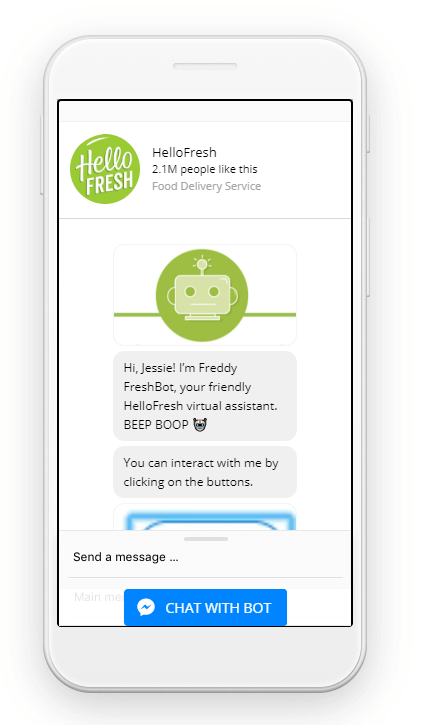
RapidMiner
Rapid Miner uses Conversational Marketing with chatbots to find the best leads. With a large number of site visitors, they were no longer able to speak to everyone, and they needed to find out which visitors were most likely to buy.
RapidMiner was able to identify these potential customers with the help of its intelligent LeadBot, which automated the lead qualification process.
Once identified, qualified leads are then automatically asked to arrange a meeting with a sales representative, which alleviates their burden to qualify leads personally. By adding this functionality to the website, RapidMiner can now address almost every page visitor and evaluate them for their sales potential.
eBay
By the end of 2020, 50% of user requests will be voice commands.
This statistic is a wake-up call for all online marketers, who need to optimize and adapt content to the usage of their target groups.
Ebay’s Google Assistant Action makes it much easier to browse the company’s extensive online shopping inventory. It enables customers to start their search with the words “Ok, Google, ask eBay to find me …”.
The intelligent Action asks users additional questions to narrow down the selection of their search and provides the most relevant results.
When the bot finds the best offer, it inquires if you want to receive the results on your smartphone so you can complete that purchase.
(The service currently only works from the United States and Australia.)
KLM
The aviation industry giant is no stranger to using the latest and most advanced technologies and has not overlooked the potential of chatbots to nurture customer relationships.
KLM’s Blue-Bot (BB for short) is the company’s chatbot and can be used via Facebook Messenger. As an intelligent assistant, BB can work as a personal assistant for customers when planning their trips and bookings.
With the help of BB, customers stay up to date and even get tips on how to pack properly, using videos.
With the conversation-based chatbot, KLM not only manages to stay connected to its customers through multiple channels but also offers support to reduce the stress of traveling.
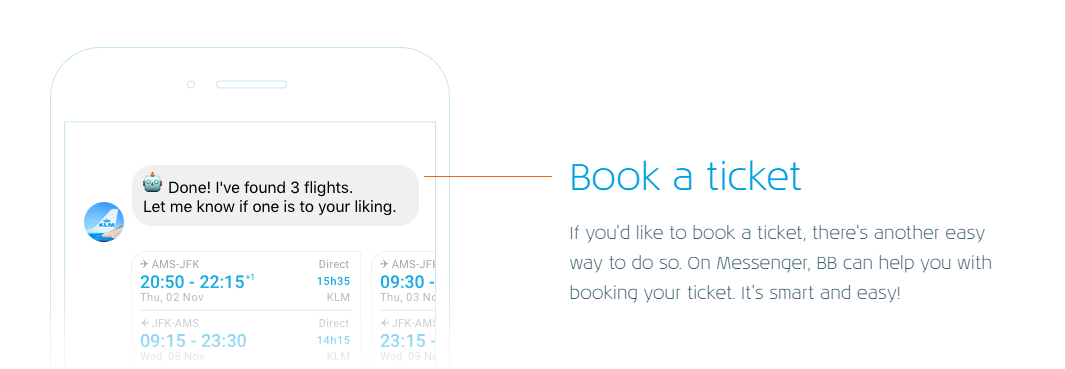
Australian Open
For the Australian Open 2018, Tennis Australia created a chatbot, especially for the tournament. The effort was part of a Facebook advertising campaign designed to attract fans who would generally wait until the event started to buy the tickets.
The bot offered help with the search for tickets and guided users through the conversation – to finalize a purchase without exhausting forms or links.
Using the chatbot definitely paid off and resulted in 170% more conversions than redirecting users to a ticketing website. This resulted in a 25-fold ROI for Tennis Australia.
The possible uses for Conversational Marketing with chatbots are incredibly broad. Above all, they manage to bring a personal touch to the otherwise anonymous online area. Find out more about our chatbots and voice assistants here.
What are Large Language Models (LLMs)?
March 18th, 2024|
What are chatbots and how do they work?
November 23rd, 2023|
The AI Act and its impact on the use of chatbots
October 27th, 2023|
